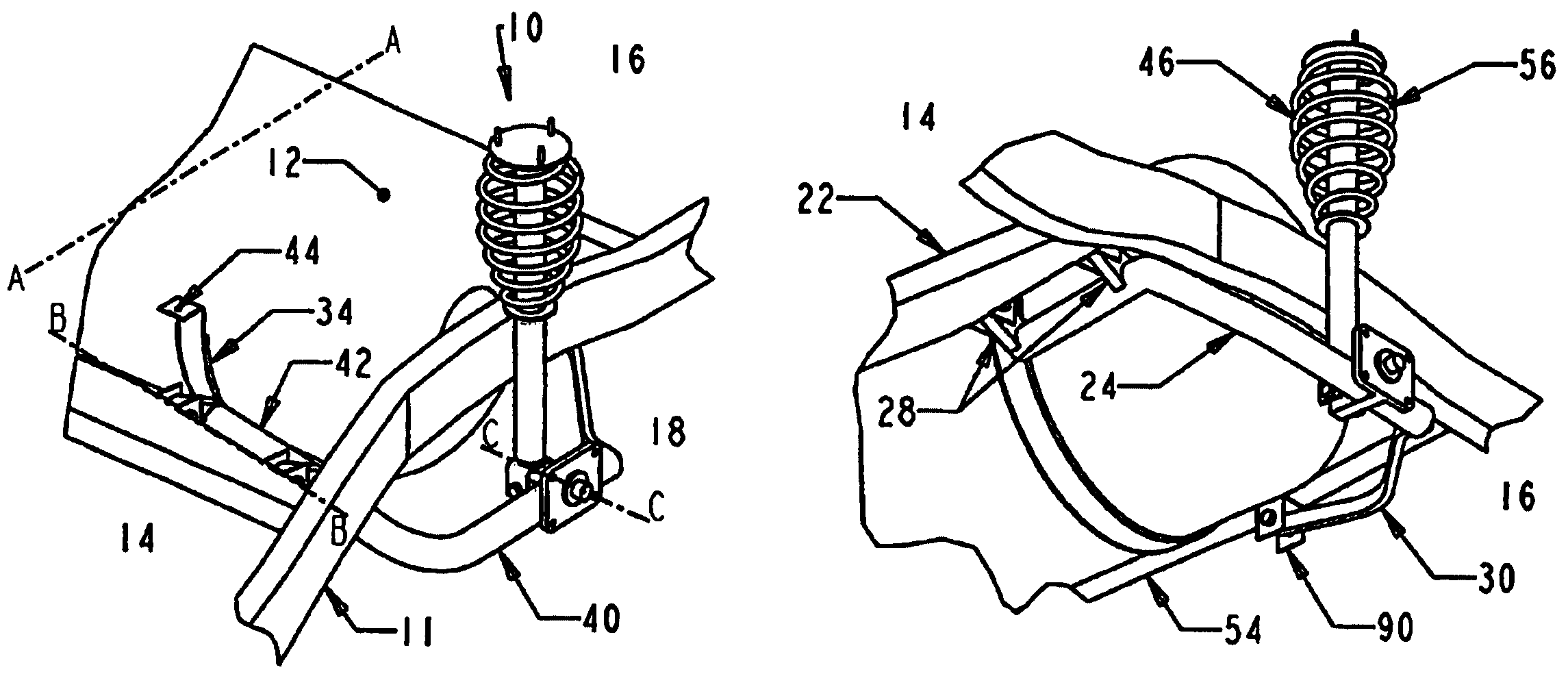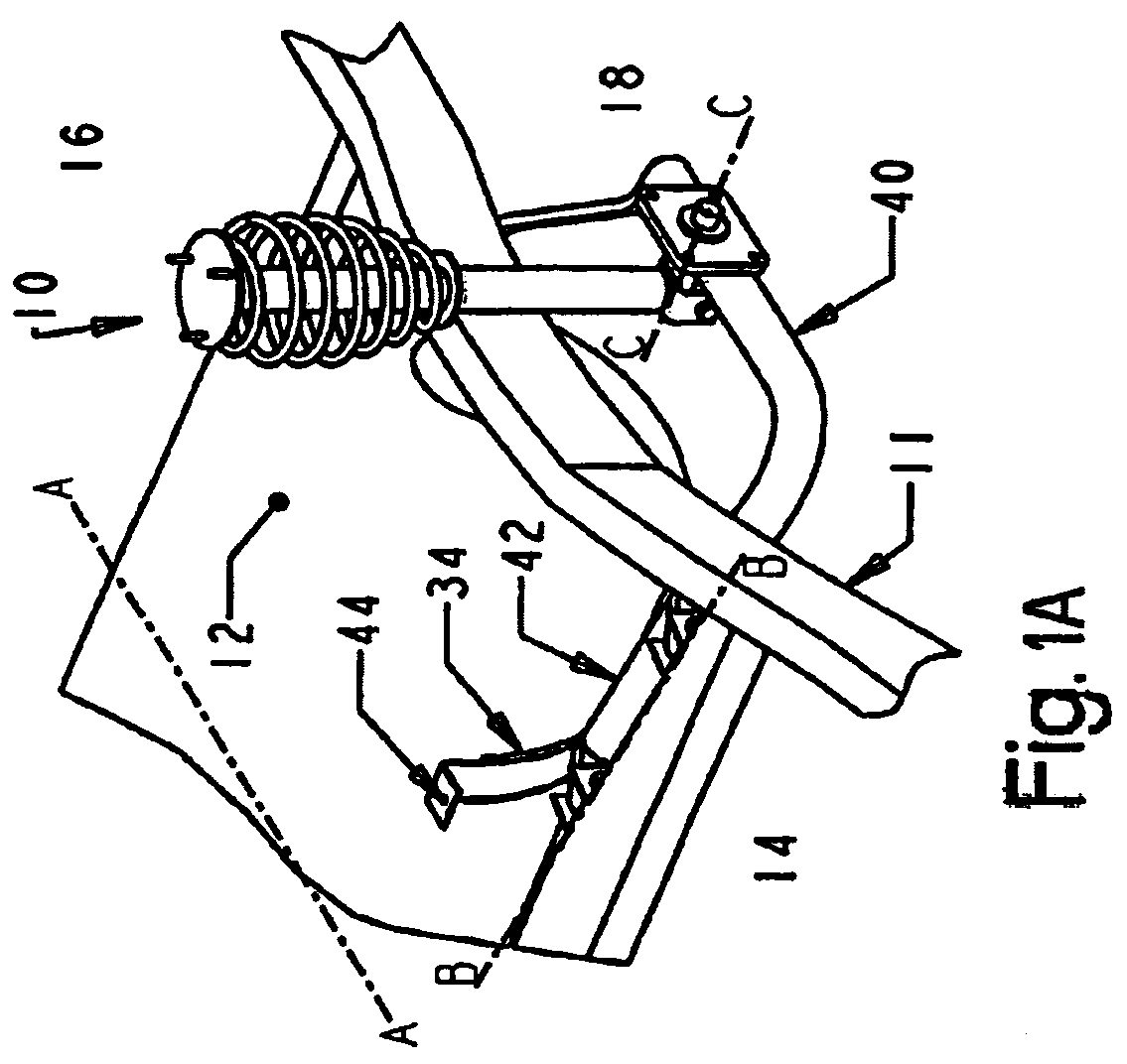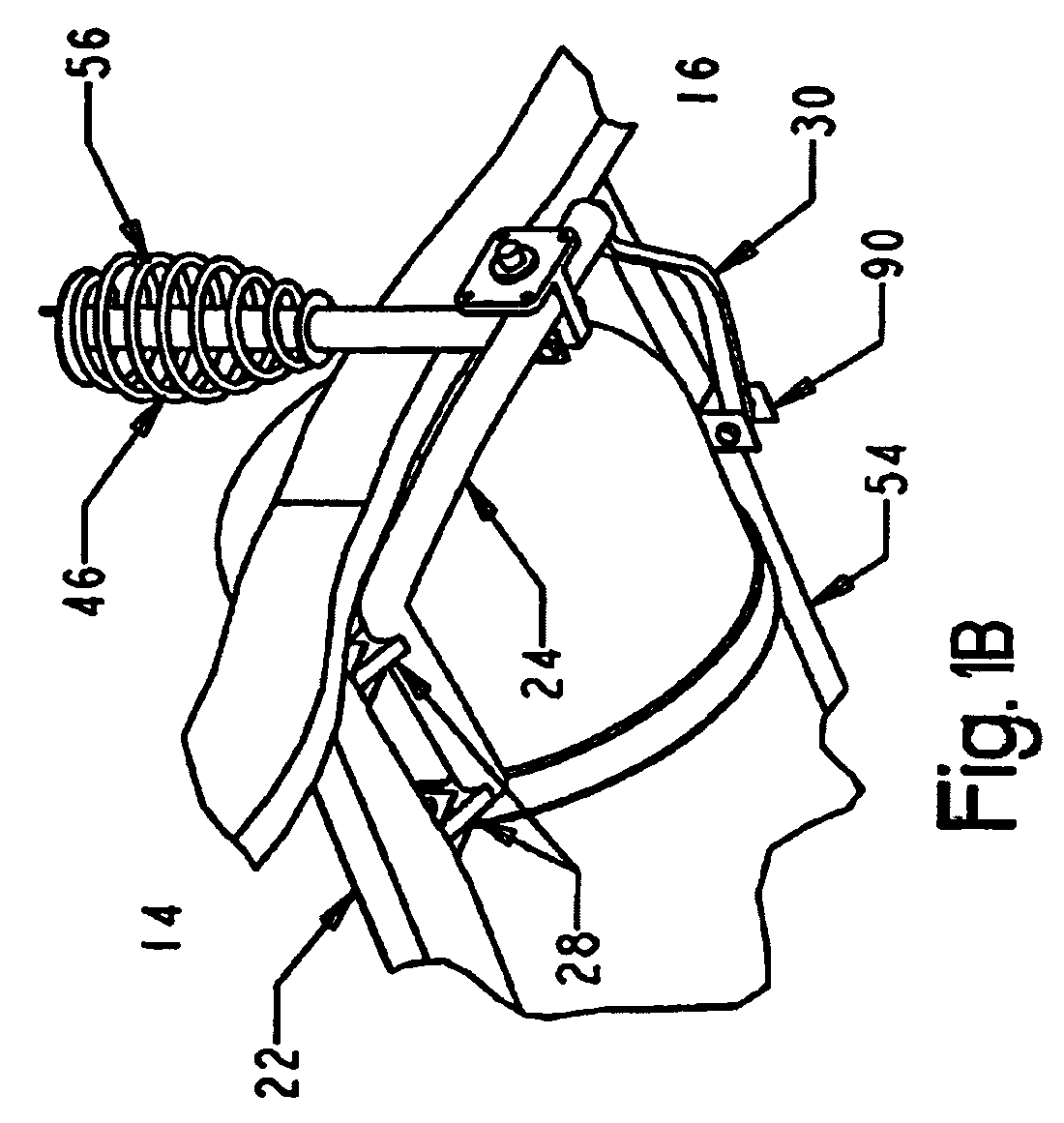Suspension system for a vehicle with a tank for liquified gas
a suspension system and tank technology, applied in the field of rear suspension sub-assembly, can solve the problems of suspension design and structural difficulties, onboard vehicle storage of hydrogen gas or natural gas, and designers are restricted, so as to improve rigidity, maximize space, and enhance handling
- Summary
- Abstract
- Description
- Claims
- Application Information
AI Technical Summary
Benefits of technology
Problems solved by technology
Method used
Image
Examples
Embodiment Construction
[0025]A preferred embodiment of the present invention will be described herein below with reference to the accompanying drawings. In the following description, well-known functions or constructions are not described in detail since they would obscure the invention in unnecessary detail.
[0026]Referring to FIGS. 1–5, a rear-suspension assembly for the chassis 10 (FIGS. 1A, 1B, 2A and 2B) of a vehicle powered by a combustion engine or a fuel cell is configured to conform to a contour of a single, lightweight, all-composite gaseous storage tank 12. The inventive configuration of the inventive suspension assembly designs, i.e., a trailing arm design, as illustrated in FIGS. 1A–1B, and a wishbone design, as seen in FIGS. 2A–2B, allows both front 14 and rear 16 (FIG. 2) portions of the vehicle to contribute to the overall rigidity of the suspension, particularly to a rear suspension subassembly 18. As a consequence of enhanced rigidity, the rear suspension subassembly 18 exhibits the impro...
PUM
 Login to View More
Login to View More Abstract
Description
Claims
Application Information
 Login to View More
Login to View More - R&D
- Intellectual Property
- Life Sciences
- Materials
- Tech Scout
- Unparalleled Data Quality
- Higher Quality Content
- 60% Fewer Hallucinations
Browse by: Latest US Patents, China's latest patents, Technical Efficacy Thesaurus, Application Domain, Technology Topic, Popular Technical Reports.
© 2025 PatSnap. All rights reserved.Legal|Privacy policy|Modern Slavery Act Transparency Statement|Sitemap|About US| Contact US: help@patsnap.com



